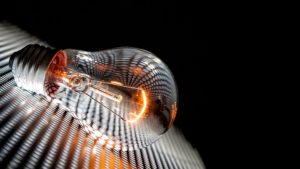 Many businesses have shifted to LED lighting because of its many benefits. Retrofitting your lights with LEDs, however, isn’t as simple as purchasing some light bulbs from your nearest hardware. There are a number of things to consider if you want your business in [city] to get the most out of your decision to switch to LED lighting.
Many businesses have shifted to LED lighting because of its many benefits. Retrofitting your lights with LEDs, however, isn’t as simple as purchasing some light bulbs from your nearest hardware. There are a number of things to consider if you want your business in [city] to get the most out of your decision to switch to LED lighting.
1. Know Why You Need LED Lighting
It’s important to understand why you’re changing to LED lighting, especially if it’s a move that you think will save you money.
Ask yourself these questions:
- Will you be incorporating sensors?
- What lighting setup do you currently need and will this be changing in the future?
- Would you need a lot of control, in terms of brightness, over your lighting system?
- Will you be staying long in the space?
- Is the area already bright enough?
Your answers to these questions will help you understand what the goal behind your lighting retrofit is. Is it to brighten up workspaces? Is it to reduce your lighting costs? Do you have special considerations, perhaps involving decorative lighting (common in retail stores)?
2. Foresee and Understand Lighting Challenges
If your business facility experiences high levels of moisture and humidity, can you find LED bulbs that work in these conditions? What percentage of your lights are required indoors and what percentage are needed outdoors? Does your facility experience extreme temperatures?
These are just some of the potential lighting challenges that should influence your decision on which LED light bulbs to get. You also have factors like the lighting requirements of workspaces—for example, general office spaces may have to be brighter than conference rooms.
3. Get to Know the Product
Do your research on the product you’re interested in purchasing. Go online and read reviews or drop by the store and talk to a salesperson to see the lights yourself.
If possible, talk to a lighting designer to request a mock-up made for your retrofit projects, especially if the replacement lamps are going to use your existing sockets. Take note of the difference in light distribution so you can figure out the ideal brightness levels you’ll need when switching from fluorescent or incandescent lamps to LEDs. You can also use the mock-up to gauge the difficulty of the re-wiring work need for your retrofit.
4. Improve Your Lighting Controls
When retrofitting your lights, you might as well improve your lighting controls while you’re at it. Dimmers, sensors, and timers are by no means new, but since they work so well with LEDs, many business that switch to LEDs also install these lighting controls to make their lights more flexible. Dimmers, sensors, and timers not only allow for better control of your lighting, they also improve its energy efficiency by letting you control how much power you want to use.
5. Keeping Up with Maintenance
Once you have your LED lighting system installed, you need to know how to maintain it.
The good news is that LEDs are relatively fuss-free. With some bulbs having life spans of 15,000 to 20,000 hours, it’ll be a while before you encounter burnt out lights. Maintenance will only usually require a thorough cleaning of once or twice a month.
By understanding how your LED lights work and what kind of features they bring to the table, it becomes easier to know what kind of value they have to offer. Remember these tips to maximize your ROI from your LED investment.

![How Much Can You Save When Using LED Light Bulbs? [city]](https://8blocks.s3.amazonaws.com/eepros/blog-images/2016/01/coins-912719_640-300x199.jpg)
![GE LED Lighting Solutions in [city] [city]](https://8blocks.s3-us-west-1.amazonaws.com/eepros/2020/social.jpg)
![The Best Smart LEDs You Can Buy In 2017 [city]](https://eepros.com/wp-content/uploads/2017/07/pexels-photo-271734-300x200.jpeg)
![Effective Fixes for 4 Common Lighting Mistakes [city]](https://eepros.com/wp-content/uploads/2018/08/brick-wall-1834784_640-300x200.jpg)